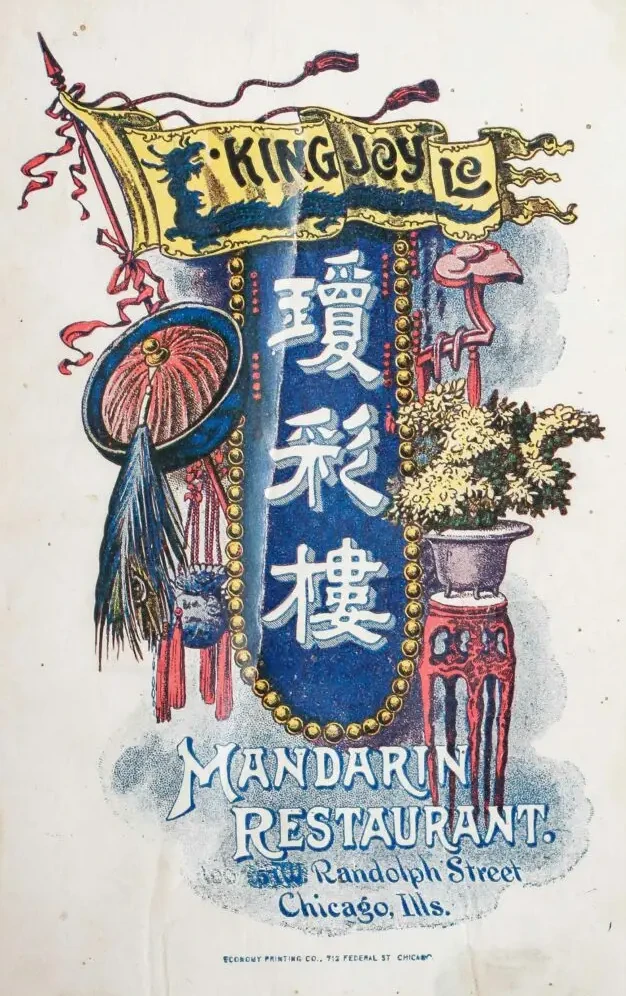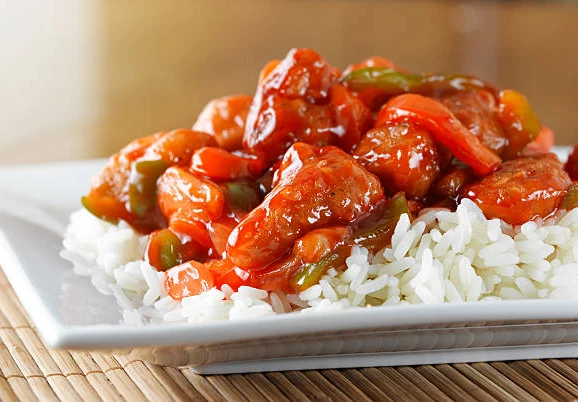Sweet and Sour Sauce

Granny's Sweet and Sour Sauce brings the perfect balance of tangy and sweet flavors right to your kitchen. This versatile condiment combines the tropical brightness of pineapple juice with the depth of soy sauce and the tanginess of rice vinegar for a sauce that elevates any dish it touches.
Skip the store-bought versions with their artificial ingredients and excess sugar. This homemade sauce delivers authentic flavor with simple, natural ingredients. Whether you're using it as a dipping sauce for egg rolls, a glaze for chicken, or a flavor boost for stir-fries, this sauce brings a wonderful dimension to your cooking.

Ingredients
1 cup canned pineapple juice ¾ cup packed light brown sugar ⅓ cup rice vinegar 3 tablespoons ketchup 2 tablespoons soy sauce
For the Cornstarch Slurry
1½ tablespoons cornstarch 2 tablespoons water 2-3 drops all-natural red food coloring (optional)
Method
- 1. Place all of the sauce base ingredients (pineapple juice, brown sugar, rice vinegar, ketchup, and soy sauce) in a small saucepan and bring to a boil over medium heat, stirring occasionally.
- 2. While the sauce is heating, make the cornstarch slurry by dissolving the cornstarch in water in a small bowl. Stir until completely smooth with no lumps.
- 3. Once the sauce base reaches a boil, stir in the cornstarch slurry and reduce heat to medium-low. Simmer for another minute until thickened, stirring constantly to prevent lumps from forming.
- 4. If using red food coloring for that classic restaurant appearance, stir it in now until evenly distributed.
- 5. Remove from heat and let the sauce cool completely before transferring to an airtight container. Store in the refrigerator for 2-3 weeks.

Sweet and Sour Sauce: A Journey Through Culinary History

Granny's Sweet and Sour Sauce represents more than just a delicious condiment; it's a culinary bridge between Eastern and Western food traditions. This vibrant red sauce, with its perfect balance of flavors, tells a fascinating story of cultural exchange, adaptation, and the evolution of taste across continents and generations.
Ancient Origins
The concept of combining sweet and sour flavors dates back thousands of years in Chinese cuisine. As early as the Tang Dynasty (618-907 CE), Chinese cooks were creating dishes that balanced these opposing taste elements, believing that such harmony was essential for both culinary excellence and good health. Traditional sweet and sour sauces in China typically used ingredients like hawthorn berries, rice vinegar, and sugar or honey.
The philosophy behind sweet and sour preparations stems from the Chinese concept of balance—yin and yang—which extends to culinary traditions. The sour element (yin) balances the sweet component (yang), creating a harmonious whole that satisfies multiple taste receptors simultaneously.
Cultural Fusion and Adaptation
The sweet and sour sauce familiar to most Americans today is the result of cultural adaptation. When Chinese immigrants arrived in the United States in the 19th century, they modified their traditional recipes to appeal to Western palates and accommodate locally available ingredients. The familiar bright red sauce emerged in Chinese-American restaurants during the mid-20th century.
The addition of pineapple juice—not traditionally used in authentic Chinese sweet and sour preparations—reflects this adaptation. Canned pineapple became widely available in America in the early 20th century, and its tropical sweetness paired with its natural acidity made it an ideal ingredient for this Americanized version.
The Rise of Chinese-American Cuisine

Sweet and sour sauce became a defining element of Chinese-American cuisine during the post-World War II era. As American soldiers returned from service in the Pacific with new culinary experiences, and as suburbs expanded with their strip malls and takeout restaurants, Chinese-American food found a receptive audience.
The 1950s and 1960s saw the rise of sweet and sour dishes like sweet and sour pork, which became staples on Chinese restaurant menus across America. These dishes, with their approachable flavors and vivid presentation, introduced many Americans to their first taste of "exotic" cuisine, albeit in a highly adapted form.
Home Kitchen Adaptations
Homemade versions of sweet and sour sauce, like Granny's recipe, began appearing in American cookbooks and women's magazines by the 1960s. These recipes often simplified restaurant preparations while maintaining the signature flavor profile. The use of ketchup—another uniquely American adaptation—provided both color and a familiar flavor foundation that helped bridge cultural taste preferences.
As home cooks like Granny embraced these recipes, they often added their own touches and passed them down through generations, creating family traditions around dishes that had already traveled across cultures and continents. The result is a condiment that, while far removed from its ancient Chinese origins, carries its own authentic heritage as an American adaptation.
The Science of Sweet and Sour
The appeal of sweet and sour flavor combinations is rooted in both psychology and physiology. Our taste buds are naturally attracted to contrasting flavors that stimulate multiple sensory pathways:
- Sweetness is detected primarily by receptors at the tip of the tongue and triggers pleasure centers in the brain
- Sourness is detected along the sides of the tongue and creates a counterbalance that prevents sweetness from becoming cloying
- The umami components from soy sauce and ketchup add depth and complexity
- The cornstarch not only thickens the sauce but creates a smooth mouthfeel that coats the palate
This combination creates what food scientists call a "flavor loop"—a sensory experience that keeps the taste buds engaged by constantly alternating between different taste sensations.
Versatility in Modern Cooking
Today, sweet and sour sauce has transcended its origins as a simple accompaniment to Chinese-American dishes. Its versatility makes it a valuable addition to any home cook's repertoire:
- As a dipping sauce for appetizers like egg rolls, wontons, and chicken nuggets
- As a glaze for grilled or baked meats, particularly chicken, pork, and shrimp
- As a stir-fry sauce that transforms simple vegetables and proteins
- As a marinade that tenderizes while adding complex flavor
- As an unexpected addition to burgers, wraps, and fusion dishes
Tips for Sweet and Sour Sauce Success
Creating the perfect sweet and sour sauce requires attention to detail and an understanding of how each component contributes to the final result. While the recipe is relatively simple, mastering these nuances will elevate your sauce from good to exceptional:
Balancing Flavors
- The ideal ratio of sweet to sour varies by personal preference—don't hesitate to adjust the brown sugar or vinegar to suit your taste
- Fresh pineapple juice can be substituted for canned, but may require adjusting the sugar depending on the fruit's natural sweetness
- Rice vinegar provides the most authentic flavor, but apple cider vinegar can be substituted in a pinch
- The soy sauce adds depth and umami—use low-sodium versions if watching salt intake
Texture and Appearance
- The cornstarch slurry must be completely smooth before adding to prevent lumps
- Always add the slurry to boiling liquid and continue to stir as the sauce thickens
- The sauce will thicken further as it cools, so remove from heat when it's slightly thinner than your desired final consistency
- The optional food coloring creates the familiar bright red appearance, but natural alternatives include a small amount of beet juice or paprika
Storage and Serving
- Store in glass containers rather than plastic to prevent staining
- The sauce will keep for 2-3 weeks in the refrigerator but may separate—simply reheat and stir to recombine
- For longer storage, freeze in ice cube trays for convenient portion control
- Warm the sauce slightly before serving for the best flavor and consistency
Cultural Legacy and Modern Appreciation
Today, as food culture has evolved to embrace more authentic international cuisines, the Chinese-American sweet and sour sauce represents an important chapter in American culinary history. Rather than dismissing it as inauthentic, food historians and chefs now recognize it as an authentic creation in its own right—a genuinely American interpretation that tells the story of immigration, adaptation, and cultural exchange.
Granny's Sweet and Sour Sauce recipe captures this legacy while providing a homemade alternative to commercial versions that often contain high fructose corn syrup, artificial colors, and preservatives. By making this sauce from scratch, you're not only creating something more delicious and wholesome but also participating in a living culinary tradition that continues to evolve.
So the next time you prepare Granny's Sweet and Sour Sauce, remember that you're stirring up more than just a tasty condiment—you're mixing together threads of culinary history that span continents and generations, creating a perfect balance that's greater than the sum of its parts.